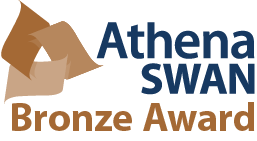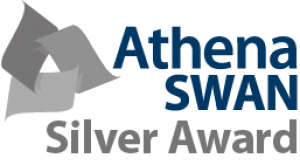You are here
- Home
- Dr Simon Collinson
Dr Simon Collinson
Professional biography
My research interests include sustainable chemistry, recycling of wastes, heritage science, materials chemistry, chemical education, biological inorganic chemistry, catalysis, and environmental chemistry.
My PhD concerned ‘Bioinorganic chemistry mimicking copper metalloenzymes’ with Professor David Fenton at the University of Sheffield and was sponsored by BP Chemicals. This developed dicopper complexes of macrocylic Schiff base ligands.
I then worked at the University of Kansas as a postdoctoral fellow developing ‘Metal catalysts for bleach activation’ with Professor Daryle Busch and the Proctor & Gamble Company which led to several patents and publications.
I returned to the UK in 1998, working at the University of Exeter as a postdoctoral fellow studying ‘Metal containing liquid crystals’ with Professor Duncan Bruce. In 2000 I continued at the University of Exeter as a postdoctoral fellow developing ‘Electrochemical sensors for biological molecules’ with Dr Jim Tucker.
In 2001 I was appointed at the University of Nottingham as a temporary lecturer and subsequently teaching fellow in Inorganic Chemistry.
In 2009 I moved to Cranfield University as a lecturer in Environmental and Waste Chemistry.
I joined the Open University in November 2011 as a Teaching Fellow in Chemistry and an Associate Lecturer on the level 3 Metals and Life course.
In 2014 I was promoted to be a Lecturer in Chemistry and Senior Lecturer in 2019.
Research interests
Applied Research
I have a long standing interest in applying chemistry to real world challenges. Current and recent projects include;-
1) Cleaning costumes, vintage rugs and carpets (originally funded by HEIF in colaboration with the Victoria & Albert Museum) and now this is an AHRC PhD project with the V&A.
2) Conserving and educating the public about bioplastic items in museum collections with the Museum of Design in Plastics (MoDiP) and this is an AHRC PhD project.
3) Crop by-product processing into nanomaterials incorporating bioactives for targeted release and shelf-life extension (collaboration with University of Newcastle, Fera, Biopower Technologies Ltd, Marks & Spencer and New Food Innovations funded by FoodWasteNet). A PhD student continues this research area staring in Oct. 2020.
4) Development of more environmentally-friendly road markings, Knowledge Transfer Partnership with WJ Products Ltd and the Open University.
5) Recycling waste plastics either by depolymerisation to their monomers (e.g. mixtures of polyethylene terephthalate and polylactic acid) or decolourising waste plastic film (e.g. polyethylene or polystyrene) (funded by CIWM).
6) Upcycling of food waste into higher value proteins or peptides using (a) polymer supported transition metal catalysts and (b) chitosan supported enzymes. (funded by CIWM, IBCarb, Nuffield Foundation and Yessenov Foundation).
7) Analysing precious and strategically important metals in waste materials (e.g. Waste electronic and electrical equipment, WEEE, ash from incineration and leachate) (funded by CIWM)..
8) The application of catalysis to the conversion of biomass, in particular the oxidation of starch, cellulose and lignin (funded by the Nuffield Foundation).
9) Recycling carpets in the removal of pollution (e.g. phosphate or metals) from water (funded by CIWM).
10) Modelling micorplastics within the Environment with C. Elegans nemaotdes.
We gratefully acknowledge AHRC, OOC, EPSRC, DEFRA, the Chartered Institute of Wastes Management (CIWM), the RSC, FoodWasteNet, IBCarb Network, the British Council, Geotech, Higher Education Innovation Fund (HEIF) and the Nuffield Foundation for supporting this work in recent years.
Also I acted as an Associate Editor for the Journal of Chemistry (2014-2017).
Educational Research
I am part of teams developing home experiments on sustainability with Smart phones and remote OPENScience lab undergraduate experiments in particular using remote FTIR, an autotitrator and flow chemistry.
I have been researching best practise in student teaching and learning using synchronous and asynchronous online media. For instance in collaboration with Drs Crabb, Williams and Janes we have an eSTeEM funded project entitled Graduate skills in chemistry: online delivery, assessment and tracking.
I am also interested in improving the experience of international students in online learning and developing problem based learning for chemistry students. Consequently I led a HEA funded project on context based learning activities to better engage international students in distance learning.
Teaching interests
S350 Evaluating Contemporary Science, Chair for both the production and presentation.
SXM390 Science project course: Frontiers in Chemistry, Strand Chair
SS021 Laboratory course, Chair (and previously module team member)
S215 Chemistry Essential Concepts, course production team and module team member
S248 Chemistry in life: food, water and medicines, course production and module team member
S315 Chemistry Further Concepts, course production and module team member
S347 Metals and Life, module team member and tutor
S205 The Molecular World, module team member
SXR103 Practising Science, tutor
Impact and engagement
I have been a key advisor to BBC Radio 4’s Inside Science for several years.
Whilst at the OU, I have enjoyed supervising my PhD students Lewis Anderson, David Elliott, Daniel Marin Florido (at Jonson Matthey), Chris Foster, Panagiotis Morfis and Katy Woodason. MSc students Marc Berger, Emmanuel Okpala, Yerkanat Kanafin and Gaetan Hamel, A-S level Nuffield students Becca Whelan, Beka Lawman, Abi Barbour and Ben Phan who obtained their Gold Crest awards. Concurrently, I supervised undergraduate summer project students Ellie Atkinson, Abi Barbour, Joe Beebee, Millie Dean, Charlotte Hancox, Kirsten Hawkins, Sophie Patrick and Alex Simmons. Also French visiting students Marine Klehenz, Alexandre Piton and Clemence Sayer.
I am a comittee member of the RSC MidAnglia Local Section and the RSC Eastern Region Steering Group. Also I am a STEM ambassador and have led several outreach activities on Plastics and their recycling for ChemistryInAction and Education in Action as well as RSC Top of the Bench.
Recent oral presentations include the following:
-
Recovering valuable chemicals from waste plastics, SR Collinson, Chartered Institution of Wastes Management, CIWM London meeting, 2018 and WaRM 2019, Open University.
-
Celery waste as a source of mannitol and nitrates, S R Collinson, C Hancox and P Metcalfe, BBSRC FoodWasteNet event Field Waste Valorisation - the next steps? Nottingham, 2018.
-
Invited talk on Recycling Post-consumer Waste Plastics, SR Collinson, Sustainable Functional Materials, Weston Super Mare, 2018.
-
Upcycling wastes to recover valuable chemicals or materials, SR Collinson, WaRM2017, Open University, 2017.
-
Immobilised enzymes and catalysts for the upcycling of food wastes/plastics into biodiesel or chemicals, SR Collinson, E Atkinson, G Hamel, N Chatterton, R Villa, Catalysis & Food Waste Valorisation, FoodWasteNet meeting at Aston University, 2016.
-
Upcycling food wastes into high-value peptides & proteins, SR Collinson, M Berger, R Villa, Biopolymers and bioplastics from waste, FoodWasteNet event, 2016.
- Upcycling protein waste into higher value peptides and proteins, M Berger, SR Collinson, R Villa, London & Southern counties CIWM- event, Reading, 2016.
- Catalysts and the recovery of materials and chemicals from waste, SR Collinson, LHCS Research Day, 2015.
- Recovery of materials and chemicals from waste, SR Collinson, Research Seminar, Bangor University, 2014.
- Online tutorials – what we’ve learnt so far, SR Collinson, E M Crabb, Scholarship Seminar, OU, 2014.
Externally funded projects
True Colours: The effects of detergent use on the historic interpretation, understanding and conservation of museum textiles
| Role | Start date | End date | Funding source |
|---|---|---|---|
| Lead | 01 Oct 2019 | 30 Sep 2023 | AHRC Arts & Humanities Research Council |
This PhD project is an AHRC funded Collaborative Doctoral Partnership between the V&A and the OU. This interdisciplinary project between the Open University and the V&A Museum aims to examine how conservators and curators make decisions about cleaning museum textiles, and the effect of conventional wet-cleaning on museum textiles. In doing so it aims to enhance museum conservation and curatorial practices as well as to develop improved cleaning processes for museum textiles. This research thus has excellent potential to development innovative practical and inexpensive cleaning techniques as well as improved decision-making strategies that can be adopted by the textile conservation profession, within and beyond the UK. | |||
The enzymatic synthesis of biodegradable mannitol surfactants from celery wastes
| Role | Start date | End date | Funding source |
|---|---|---|---|
| Lead | 01 Aug 2019 | 31 Oct 2019 | BBSRC Biotechnology and Biological Sciences Research Council;LBNet Lignocellulosic Biorefinery Network |
This project will produce surfactants based on mannitol which itself is derived from waste biomass arising from the production of celery. The global surfactants market is expected to reach $64,408 million by 2025 according to Allied Market Research. Surfactants are ubiquitous compounds in many cosmetics, foods and drugs. With growing environmental awareness there is a need to develop surfactants from renewable resources that at end of life will biodegrade in the environment. Similarly there is a large market for surfactants that are safe for human use and consumption. It is noteworthy that in 2017 the UK produced 53 thousand tonnes of celery (UK Horticulture Statistics 2017) and separately it has been estimated that 45% of a celery crop goes to waste providing a feedstock here. In the future other agricultural waste streams could be studied using a similar process as described here. | |||
The application of powdered food wastes as a natural nitrite source in combination with lysozyme for meat curing
| Role | Start date | End date | Funding source |
|---|---|---|---|
| Lead | 23 Jul 2018 | 31 Aug 2018 | FoodWasteNet |
Traditionally the curing of meats such as sausages employed the addition of inorganic nitrites. Nitrite exhibits strong antimicrobial and antioxidant effects and generates a cured meat colour. Unfortunately nitrite can react with secondary or tertiary amines in meat to form N-nitroso compounds which may produce undesirable carcinogenic, teratogenic and mutagenic activity. Recently it has been suggested that high consumption of processed meat may increase the risk of cancer, and that dietary nitrosamines are positively associated with cancer. Natural celery juice powder may be used for curing however this requires a high dosage due to the slow conversion of nitrates to nitrite. Consequently in this project the aim is to study the application of dried micronised celery waste in meat curing applications. | |||
Crop by-product processing into nanomaterials incorporating bioactives for targeted release and shelf life extension (resubmission)
| Role | Start date | End date | Funding source |
|---|---|---|---|
| Lead | 01 Oct 2017 | 30 Sep 2018 | FoodWasteNet |
Simon Collinson (Life Health & Chemical Sciences, Open University) and Nick Chatterton (Life Health & Chemical Sciences, Open University), with external collaborators at Newcastle University, Biopower Technologies Ltd, and Marks and Spencer plc A total of ca. £24K funding has been secured to support a 4 month project on the formulation and testing of crop by-product nanomaterials which incorporate anti-microbial bioactive compounds for potential usage in food grade materials and extension of their shelf-life. The work will involve electrospinning of mechanically processed crop by-products blended with other biodegradable natural polymers such as alginic acid or chitosan. The porosity of these materials will be further optimized by chemical or enzymatic processes, followed by studies on the encapsulation and controlled release of the bioactives. The anti-microbial and antioxidant activity of the bioactive-loaded nanomaterials will also be assessed. As well as the food industry, the materials are envisaged for potential use in the personal care products, pharmaceuticals and surface coatings. | |||
Supported enzymes to recover valuable chemicals from polyester wastes
| Role | Start date | End date | Funding source |
|---|---|---|---|
| Lead | 01 Jun 2017 | 31 May 2018 | CIWM-Defra Chartered Institution of wastes Management - Defra |
This project will apply enzymes catalysts (such as lipase), either freely in solution or when supported on the biopolymer chitosan, in the hydrolysis of polyester wastes in cost-effective and efficient processes. By supporting the lipase it will both increase its stability and enable it's recycling. This proposal explored as a support for the enzyme chitosan, which is derived from a waste product from the shell fish processing industry. To put this into context the UK shellfish processing sector has a major waste disposal problem as waste from calcareous shellfish is around 75,000 tonnes per year. For comparison we also studied the role of simple metal salts in this hydrolysis process, for example sodium hydroxide or zinc acetate. The project focused on the polyesters polyethylene terephthalate (PET) and polylactic acid (PLA). | |||
Evaluating immobilised Enzymes on Chitosan for Upcycling Protein Wastes
| Role | Start date | End date | Funding source |
|---|---|---|---|
| Lead | 04 Jul 2016 | 26 Aug 2016 | IB Carb Network |
This is a pilot research project for an undergraduate student. The project builds on my previous research functionalizing the carbohydrates starch and chitosan to produce new functional materials. This project will support proteases on chitosan to produce recyclable and stable catalysts for the hydrolysis of protein wastes to more valuable hydrolysates. WRAP has estimated waste in the food and drinks supply chain (WRAP 01 312 PAD102-308) reporting that ‘about 2.25 million tonnes of material are rendered each year to produce around 500,000 tonnes of protein meal.’ This example represents an important biorefinery resource for valuable proteins, peptides and amino acids. Protein containing wastes arise from several food industries and the focus here will be from cheese production (whey protein), connective tissue (the protein collagen which yields gelatin), and eggs (ovalbumin). The hydrolysates from waste proteins often display improved antioxidant properties compared to the protein and this will be also studied. | |||
Targeting radiotherapy with DNA binding metal complexes of amino acids.
| Role | Start date | End date | Funding source |
|---|---|---|---|
| Lead | 06 Jul 2015 | 28 Aug 2015 | Royal Society of Chemistry (RSC) |
This was to fund an undergraduate student, Kirsten Hawkins, who has approached the department for a summer placement.New approaches that localise radiosensitivity within tumours have the potential to improve the effectiveness of radiotherapy and reduce side effects for patients. Here we developed compounds, known as radiosensitisers, containing heavier elements such as metals that produce electrons upon radiotherapy. These electrons promote localised DNA damage in cancer cells leading to their death. Careful design of the complexes aimed to promote their localisation in the DNA of cancer cells so that those that these are most damaged upon radiotherapy. It is significant that we developed one copper containing compound that exhibited a comparatively low cytotoxicity in HEK293T cells (human embryonic kidney cells) over 24 h, for example it was approximately 45 times less cytotoxic to these cells in comparison to the anticancer drug cis-platin. This suggests its further study in targeted radiotherapy where the cytotoxicity in cancer cells would be turned on by the application of the radiotherapy. It is significant that we developed one copper containing compound that exhibited a comparatively low cytotoxicity in HEK293T cells (human embryonic kidney cells) over 24 h, for example it was approximately 45 times less cytotoxic to these cells in comparison to the anticancer drug cis-platin. This suggests its further study in targeted radiotherapy where the cytotoxicity in cancer cells would be turned on by the application of the radiotherapy. Abi Barbour, an A-S level student, also worked on this project under the Nuffield Research Placement scheme and as a result achieved her Gold Crest award. | |||
MSc project on ‘Upcycling’ of food waste into high-value proteins and peptides
| Role | Start date | End date | Funding source |
|---|---|---|---|
| Lead | 01 Mar 2015 | 29 Feb 2016 | CIWM-Defra Chartered Institution of wastes Management - Defra |
This MSc project was supported by Chartered Institution of Wastes Management (CIWM) and Defra. Globally the food industry produces more than 2.25 million tons of food wastes every year, representing a valuable resource for proteins, peptides and amino acids. Protein rich wastes arise from several industries including the retail of products from fish (fish meal, WRAP Project code:RSC009-001 & RSC009-003), poultry (feathers) and eggs (egg shell membrane). These proteins can be extracted to yield mixtures of valuable chemicals that for instance display antioxidant properties. This project studied ‘upcycling’ food waste into high-value chemicals using novel catalysts of zinc or nickel complexes supported on the biopolymer chitosan or the synthetic ion exchange resin Dowex M4195. These novel heterogeneous catalysts catalysed the mild hydrolysis of proteins from food waste and could be easily recovered and reused. In several cases these hydrolysis reactions successfully produced protein hydrolysates with better antioxidant activities than the initial proteins. Additionally an economic assessment was made of the cost of the catalysts against the value of the hydrolysed peptides produced. This pilot project involved Marc Berger (MSc student), Simon Collinson (at the OU), Raffaella Villa (Cranfield University) and Nick Turner (at the OU). | |||
Publications
Journal articles
Efficient removal of congo red dye using activated lychee peel biochar supported Ca-Cr layered double hydroxide (2023-12)
Cruz, Estevan D.; Missau, Juliano; Tanabe, Eduardo H.; Collinson, Simon R. and Bertuol, Daniel A.
Environmental Nanotechnology, Monitoring & Management, 20, Article 100835
Development of Nylon 6 Nanofibers Modified with Cyanex-272 for Cobalt Recovery (2023)
Chaves, Rebeca Mello; Power, Nicholas P.; Collinson, Simon Robert; Tanabe, Eduardo Hiromitsu and Bertuol, Daniel Assumpção
Environmental Technology, 44(19) (pp. 2900-2912)
Bacterial and chemical leaching of copper-containing ores with the possibility of subsequent recovery of trace silver (2019-06)
Zhappar, Nariman K.; Shaikhutdinov, Valentin M.; Kanafin, Yerkanat N.; Ten, Oleg A.; Balpanov, Darkhan S.; Korolkov, Ilya V.; Collinson, Simon R.; Erkasov, Rakhmetulla Sh and Bakibaev, Abdigali A.
Chemical Papers, 73(6) (pp. 1357-1367)
Modification of waste carpet with hydrated ferric oxide for recycling as an adsorbent material to recover phosphate from wastewater (2013-10-01)
Collinson, Simon R. and Duplá García, Oscar
Science of Advanced Materials, 5(10) (pp. 1427-1435)
The selective recycling of mixed plastic waste of polylactic acid and polyethylene terephthalate by control of process conditions (2011-10)
Carné Sánchez, Arnau and Collinson, Simon R.
European Polymer Journal, 47(10) (pp. 1970-1976)
The catalytic oxidation of biomass to new materials focusing on starch, cellulose and lignin (2010-08)
Collinson, S. R. and Thielemans, W.
Coordination Chemistry Reviews, 254(15-16) (pp. 1854-1870)
Design of Neutral Metallomesogens from 5,5-Dimethyldipyrromethane: Metal Ion Mediated Control of Folding and Hairpin Structures (2008-11)
Ames, Kelly A.; Collinson, Simon R.; Blake, Alexander J.; Wilson, Claire; Love, Jason B.; Bruce, Duncan W.; Donnio, Bertrand; Guillon, Daniel and Schröder, Martin
European Journal of Inorganic Chemistry, 2008(32) (pp. 5056-5066)
Metal-directed columnar phase formation in tetrahedral zinc(II) and manganese(II) metallomesogens (2008)
Morale, Francesca; Finn, Rachel L.; Collinson, Simon; Blake, Alexander J.; Wilson, Claire; Bruce, Duncan W.; Guillon, Daniel; Donnio, Bertrand and Schroder, Martin
New Journal of Chemistry, 32 (pp. 297-305)
Anion selectivity in zwitterionic amide-funtionalised metal salt extractants (2007-07)
Galbraith, Stuart G.; Wang, Qiang; Li, Li; Blake, Alexander J.; Wilson, Claire; Collinson, Simon R.; Lindoy, Leonard F.; Plieger, Paul G.; Schröder, Martin and Tasker, Peter A.
Chemistry - A European Journal, 13(21) (pp. 6091-6107)
The one-pot halomethylation of 5-substituted salicylaldehydes as convenient precursors for the preparation of heteroditopic ligands for the binding of metal salts (2006-12-11)
Wang, Qiang; Wilson, Claire; Blake, Alexander J.; Collinson, Simon R.; Tasker, Peter A. and Schröder, Martin
Tetrahedron Letters, 47(50) (pp. 8983-8987)
Synthesis and modulation of bis(triazine) hydrogen-bonding receptors (2006-03-13)
Mason, Pamela V.; Champness, Neil R.; Collinson, Simon R.; Fisher, Matthew G. and Goretzki, Gudrun
European Journal of Organic Chemistry, 2006(6) (pp. 1444-1449)
The binding and electrochemical recognition of barbiturate and urea derivatives by hydrogen-bonding ferrocene receptors. (2004-03-01)
Westwood, Joanna; Coles, Simon J.; Collinson, Simon R.; Gasser, Gilles; Green, Stephen J.; Hursthouse, Michael B.; Light, Mark E. and Tucker, James H. R.
Organometallics, 23(5) (pp. 946-951)
Synthesis and X-ray crystal structures of iron(II) and manganese(II) complexes of unsubstituted and benzyl substituted cross-bridged tetraazamacrocycles (2003-03-25)
Hubin, Timothy J.; McCormick, James M.; Collinson, Simon R.; Alcock, Nathaniel W.; Clase, Howard J. and Busch, Daryle H.
Inorganica Chimica Acta, 346 (pp. 76-86)
A ditopic ferrocene receptor for anions and cations that functions as a chromogenic molecular switch (2003)
Miyaji, Hidekazu; Collinson, Simon R.; Prokeš, Ivan and Tucker, James H. R.
Chemical Communications, 2003(1) (pp. 64-65)
Asymmetric synthesis of chiral α-ferrocenylalkylamines and their use in the preparation of chiral redox-active receptors (2002-11-14)
Laurent, Pierre; Miyaji, Hidekazu; Collinson, Simon R.; Prokeš, Ivan; Moody, Christopher J.; Tucker, James H. R. and Slawin, Alexandra M. Z.
Organic Letters, 4(23) (pp. 4037-4040)
Recent developments in the redox-switched binding of organic compounds (2002-05)
Tucker, James H. R. and Collinson, Simon R.
Chemical Society Reviews, 31(3) (pp. 147-156)
Novel ferrocene receptors for barbiturates and ureas (2001)
Collinson, Simon R.; Gelbrich, T.; Hursthouse, Michael B. and Tucker, James H. R.
Chemical Communications(6) (pp. 555-556)
Mesomorphic complexes of the lanthanide elements (2001)
Collinson, Simon R.; Martin, Françoise; Binnemans, Koen; Van Deun, Rik and Bruce, Duncan W.
Molecular Crystals and Liquid Crystals Science and Technology. Section A. Molecular Crystals and Liquid Crystals, 364(1) (745 -752)
The synthesis of low melting liquid crystalline lanthanide complexes with triflate counter-anions (2000-06)
Martin, Françoise; Collinson, Simon R. and Bruce, Duncan W.
Liquid Crystals, 27(6) (pp. 859-863)
Rare-earth-containing magnetic liquid crystals (2000-04-21)
Binnemans, Koen; Galyametdinov, Yury G.; Van Deun, Rik; Bruce, Duncan W.; Collinson, Simon R.; Polishchuk, Arkadiy P.; Bikchantaev, Ildar; Haase, Wolfgang; Prosvirin, Andrey V.; Tinchurina, Larisa; Litvinov, Igor; Gubajdullin, Ajdar; Rakhmatullin, Ajdar; Uytterhoeven, Koen and Van Meervelt, Luc
Journal of the American Chemical Society, 122(18) (4335 -4344)
New iron(II) and manganese(II) complexes of two ultra-rigid, cross-bridged tetraazamacrocycles for catalysis and biomimicry (2000-03-22)
Hubin, Timothy J.; McCormick, James M.; Collinson, Simon R.; Buchalova, Maria; Perkins, Christopher M.; Alcock, Nathaniel W.; Kahol, Pawan K.; Raghunathan, Ahasuya and Busch, Daryle H
Journal of the American Chemical Society, 122(11) (pp. 2512-2522)
Spectroscopic behaviour of lanthanide(III) coordination compounds with Schiff base ligands (2000)
Binnemans, Koen; Van Deun, Rik; Görller-Walrand, Christiane; Collinson, Simon R.; Martin, Françoise; Bruce, Duncan W. and Wickleder, Claudia
Physical Chemistry Chemical Physics, 2(17) (pp. 3753-3757)
The synthesis and properties of surfactant aza macrocycles (2000)
Pidwell, Andrew D.; Collinson, Simon R.; Coles, Simon J.; Hursthouse, Michael B.; Schröder, Martin and Bruce, Duncan W.
Chemical Communications(11) (pp. 955-956)
Towards magnetic liquid crystals (1999-11-01)
Binnemans, Koen; Bruce, Duncan W.; Collinson, Simon R.; Van Deun, Rik; Galyametdinov, Yury G. and Martin, Françoise
Philosophical Transactions of the Royal Society A: Mathematical, Physical and Engineering Sciences, 357(1762) (pp. 3063-3077)
Book chapters
Advanced Technologies in Water Treatment (2021-02-06)
Kanafin, Yerkanat Nurmukhambetuly and Collinson, Simon R.
In: Leal Filho, W.; Azul, A.M.; Brandli, L.; Lange Salvia, A. and Wall, T. eds. Clean Water and Sanitation. Encyclopedia of the UN Sustainable Development Goals
ISBN : 978-3-319-70061-8 | Publisher : Springer Nature
Other
Laundry and cleaning composition for fabric washing, and for hard surfaces including interiors of ovens, includes metal complex comprising transition metal atom including manganese, oxygen bleaching agent, and adjunct materials (2009-02-26)
Burkett-St, L. J. C.; Busch, D. H.; Collinson, S. R.; Hubin, T. J.; Johnston, J. P.; Kitko, D. J.; Labeque, R.; Perkins, C. M. and Williams, B. K.
Laundry and cleaning composition comprises metal complex comprising transition metal and cross-bridge macropolycyclic ligand comprising organic macrocycle ring and cross-bridge chain moiety (2008-07-10)
Busch, D. H.; Collinson, S. R.; Hubin, T. J.; Perkins, C. M.; Labeque, R.; Williams, B. K.; Johnston, J. P.; Kitko, D. J. and Burckett-St, L. J. C.




